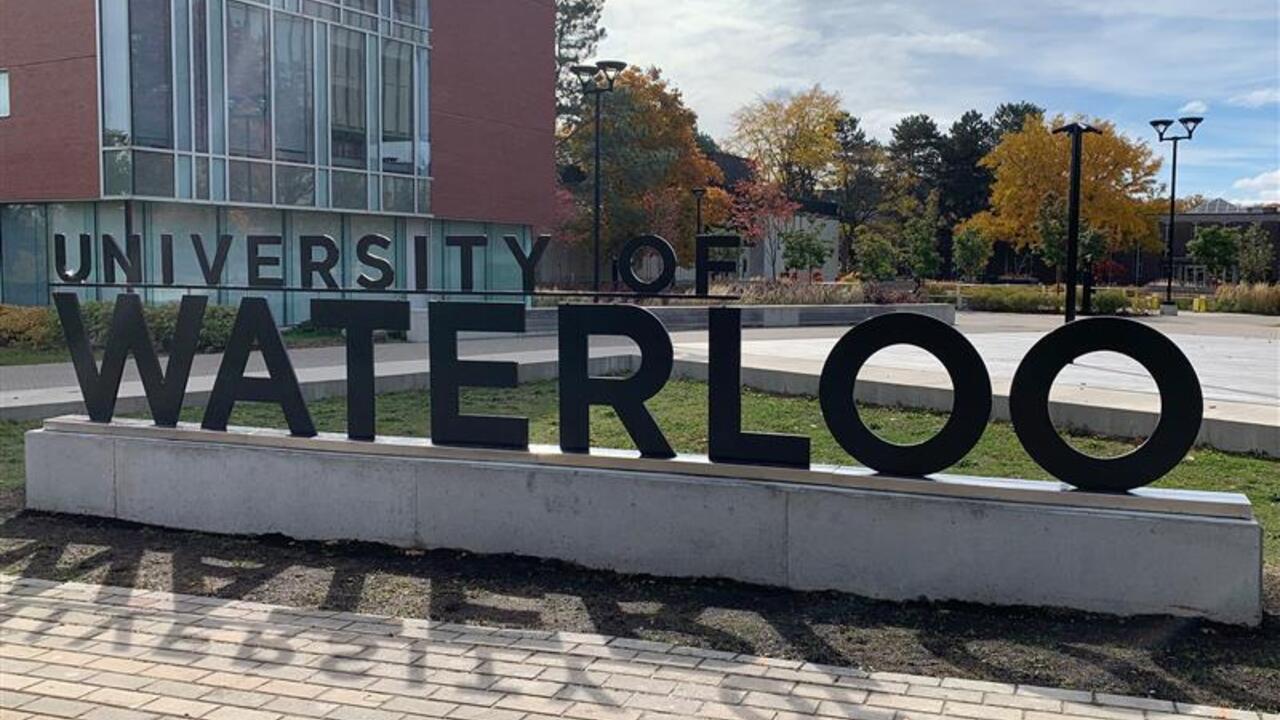
Waterloo makes public most complete Antarctic map for climate research
The University of Waterloo has unveiled a new satellite image of Antarctica that will help gain new insight into the effects of climate change.

The University of Waterloo has unveiled a new satellite image of Antarctica that will help gain new insight into the effects of climate change.
By Media RelationsThe University of Waterloo has unveiled a new satellite image of Antarctica, and the imagery will help scientists all over the world gain new insight into the effects of climate change.
Thanks to a partnership between the Canadian Space Agency (CSA), MacDonald, Dettwiler and Associates Ltd. (MDA), the prime contractor for the RADARSAT-2 program, and the Canadian Cryospheric Information Network (CCIN) at UWaterloo, the mosaic is free and fully accessible to the academic world and the public.
Using Synthetic Aperture Radar with multiple polarization modes aboard the RADARSAT-2 satellite, the CSA collected more than 3,150 images of the continent in the autumn of 2008, comprising a single pole-to-coast map covering all of Antarctica. This is the first such map of the area since RADARSAT-1 created one in 1997.
“The mosaic provides an update on the ever-changing ice cover in this area that will be of great interest to climatologists, geologists, biologists and oceanographers,” said Professor Ellsworth LeDrew, director of the CCIN and a professor in the Faculty of Environment at Waterloo. “When compared to the previous Antarctic RADARSAT-1 mosaic, we can map changes in the icescape with unprecedented accuracy and confidence. The earth’s polar regions are considered a bellwether for the effects of climate change.”

Mosaic of satellite images of Antarctica taken by RADARSAT-2.
(RADARSAT-2 Data and Products © MacDonald, Dettwiler and Associates Ltd. (2008) – All Rights Reserved. RADARSAT is an official mark of the Canadian Space Agency.)
Professor LeDrew is at the forefront of a cultural shift in the way researchers discover, share and preserve their research data. The CCIN links international researchers around the world with numerous government, university and private organizations to provide data and information management infrastructure for the Canadian cryospheric community. This mosaic map of the Antarctic is the latest addition to the CCIN’s Polar Data Catalogue. It is available on the Polar Data Catalogue website.
“The Polar Data Catalogue’s mandate is to make such information freely available to scientists, students and the public to enhance our understanding and stewardship of the polar regions,” said Professor LeDrew. “We are proud to work with the Canadian Space Agency and MDA to bring this outstanding Canadian technology and science to the international community.”
Next up for the partnership is a similar mosaic for Greenland, which will provide further crucial information about our shifting climate in the northern hemisphere. There are also plans to continue creating mosaics of Antarctica every few years to provide more data for researchers.
In just half a century, the University of Waterloo, located at the heart of Canada's technology hub, has become one of Canada's leading comprehensive universities with 35,000 full- and part-time students in undergraduate and graduate programs. Waterloo, as home to the world's largest post-secondary co-operative education program, embraces its connections to the world and encourages enterprising partnerships in learning, research and discovery. In the next decade, the university is committed to building a better future for Canada and the world by championing innovation and collaboration to create solutions relevant to the needs of today and tomorrow. For more information about Waterloo, please visit www.uwaterloo.ca
-30-
University of Waterloo
519-888-4777
www.uwaterloo.ca/news
@UWaterlooNews
Attention broadcasters: Waterloo has facilities to provide broadcast-quality audio and video feeds with a double-ender studio. Please contact us to book.

Read more
Velocity pitch competition winners share exciting startup ideas using artificial intelligence and deep tech, showcasing creativity and entrepreneurial prowess

Read more
The new development will serve as a hub for health-care innovation, enhancing services through the merger of Grand River and St. Mary’s hospitals

Read more
Waterloo and AC launch the Global Impact Creator Program to develop sustainable solutions that tackle the world’s most critical issues
The University of Waterloo acknowledges that much of our work takes place on the traditional territory of the Neutral, Anishinaabeg, and Haudenosaunee peoples. Our main campus is situated on the Haldimand Tract, the land granted to the Six Nations that includes six miles on each side of the Grand River. Our active work toward reconciliation takes place across our campuses through research, learning, teaching, and community building, and is co-ordinated within the Office of Indigenous Relations.